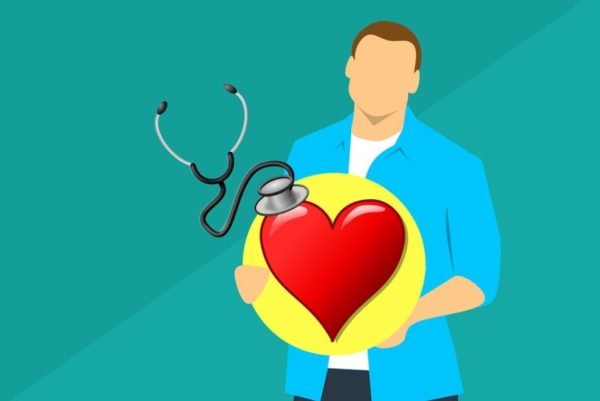SGLT2 inhibitors are a new class of drugs in the treatment of type 2 diabetes mellitus. The benefits of SGLT2inhibitors are beyond their glycemic effects. These benefits primarily target the major organs affected in patients with diabetes.
A brief introduction ...
In healthy individuals, 100% of the glucose filtered is reabsorbed. However, as the glucose load increases and crosses 180 mg/dl, more of it is poured in the urine. SGLT2 inhibitors should theoretically block the reabsorption of all the glucose filtered through the kidneys. However, in clinical scenarios, it only blocks the reabsorption of 30 – 40% of the glucose filtered. Till now, most of the antidiabetic medications used to either act on the pancreatic beta cells, the peripheral tissues, or the gut mechanism. SGLT2 inhibitors, by its unique mechanism of action, is a breakthrough addition to antidiabetic medicines. Here, I discuss, why physicians should be prescribing more and more of the SGLT2 inhibitors.
SGLT2 inhibitors cause weight loss:
 Since SGLT2 inhibitors prevent the glucose from getting reabsorbed into the blood, less of it is available for utilization.
Since SGLT2 inhibitors prevent the glucose from getting reabsorbed into the blood, less of it is available for utilization.
Can you guess, how much weight can be lost with the use of SGLT2 inhibitors?
1 gm of glucose yields 4 Kcalories.
So, even in normal circumstances, inhibiting 40% of 180 gms of glucose will result in 288 Kcal less per day. This accounts for 105120 Kcalories per year. The net loss of weight per year is about 13 Kgs, however, diabetic patients try to compensate and start eating more. Therefore, the net weight loss seen with the use of SGLT2 inhibitors is:
| Drug Name | Weight Loss Effect |
| Empagliflozin | 1.5 – 2.1 kg |
| Dapagliflozin | 0.46 – 2.16 kg |
| Canagliflozin | 2 – 2.4 kg |
| Ertugliflozin | 1.76 – 2.16 kg |
Benefits of SGLT2 inhibitors - Less Hypoglycemia:
SGLT2 inhibitors have no effect on the pancreatic beta cells, insulin production, or insulin sensitivity. Therefore, and since their action is glucose-dependent, they cause less hypoglycemia. When the glucose load is less, they are less functional as less of the glucose will be filtered. Nevertheless, in combination with insulin and sulfonylureas, they may cause hypoglycemia. Hypoglycemia in these patients is because of the concomitant drug and not directly caused by SGLT2 inhibitors.
Blood pressure-lowering effects of SGLT2 inhibitors:
SGLT2 inhibitors lower the blood pressure by the process of osmotic diuresis. When more glucose leaves the kidneys, more water goes with it. This causes a reduction in the circulating blood volume resulting in a hypotensive effect. Edematous hypertensive patients especially benefit from the use of these drugs via their diuretic effect. Furthermore, unlike the loop and thiazide diuretics, which are associated with significant electrolyte imbalance, these drugs have little effect on the body’s electrolytes. 
Cardiovascular benefits of SGLT2 inhibitors:
SGLT2 inhibitors have been shown to reduce the rates of hospitalization by 30 – 40 %. Most of the beneficial effects are thought to be related to the diuretic effects of these drugs, however, other mechanisms must be playing some role. The cardiovascular benefits in the EMPA-REG trial were seen at three months of the study drug. This emphasizes its beneficial effects other than effects on atherosclerosis or glycemic control. Most authorities think that the cardiovascular effects are secondary to the shift of energy-efficient metabolism (from utilizing carbohydrates to fats) The CREDENCE trial, apart from its effects on the progression of diabetic nephropathy to end-stage renal disease, also showed reduced all-cause mortality and deaths from cardiovascular causes and hospitalization from heart failure.
Renal protective effects of SGLT2 inhibitors:
SGLT2 inhibitors are thought to reduce the progression of diabetic nephropathy. The CREDENCE (canagliflozin and Renal Events in Diabetes with established nephropathy clinical evaluation) trial studied 4400 patients with diabetic nephropathy. Patients had an eGFR of more than 30 ml/min and an ACR of more than 300 mg/gm despite treatment with an ACE inhibitor or ARB. Canagliflozin in the trial reduced the progression to end-stage renal disease and hospitalization for heart failure. There was a trend towards reduced all-cause mortality and deaths from cardiovascular causes.
In conclusion,
The major benefits of SGLT2 inhibitors are:
- Weight reduction resulting in a good glycemic control and overall better health outcomes.
- Reducing blood pressure slowing the progression of diabetic retinopathy and nephropathy.
- Mortality benefits by targeting the heart and the kidneys.
- And last but not the least is associated with less hypoglycemia which may be detrimental especially in the elderly.




